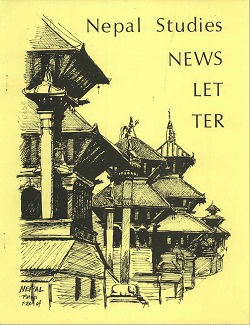Author Biography
Jan M. A. van der Valk (PhD, Anthropology, University of Kent, 2017) is an anthropologist and ethnobotanist. He is currently a postdoctoral researcher in the multidisciplinary project ‘Potent Substances in Sowa Rigpa and Buddhist Ritual’ (2018-2021) at University of Vienna’s Department of South Asian, Tibetan and Buddhist Studies. Van der Valk’s doctoral thesis traces the techno-scientific transformations of Tibetan medicines from plant to pill, forging links between two key manufacturers, in India and Switzerland respectively. He is a student of Dr. Pasang Yonten Arya since 2012, and opened the first Tibetan medical (herbal) practice in Belgium (www.deblauwepapaver.be).
Abstract
This article focuses on ethnographic work conducted at the Men-Tsee-Khang (Dharamsala, India) on Garuda 5 (khyung lnga), a commonly prescribed Tibetan medical formula. This medicine’s efficacy as a painkiller and activity against infection and inflammation is largely due to a particularly powerful plant, known as ‘virulent poison’ (btsan dug) as well as ‘the great medicine’ (sman chen), and identified as a subset of Aconitum species. Its effects, however, are potentially dangerous or even deadly. How can these poisonous plants be used in medicine and, conversely, when does a medicine become a poison? How can ostensibly the same substance be both harmful and helpful? The explanation requires a more nuanced picture than mere dose dependency. Attending to the broader ‘ecologies of potency’ in which these substances are locally enmeshed, in line with Sienna Craig’s Efficacy and the Social Ecologies of Tibetan Medicine (2012), provides fertile ground to better understand the effects of Garuda 5 and how potency is developed and directed in practice. I aim to unpack the spectrum between sman (medicine) and dug (poison) in Sowa Rigpa by elucidating some of the multiple dimensions which determine the activity of Garuda 5 as it is formulated and prescribed in India. I thus embrace the full spectrum of potency— the ‘good’ and the ‘bad,’ the ‘wanted’ and the ‘unwanted’—without presuming the universal validity of biomedical notions of toxicity and side effects.
Acknowledgements
The author is very grateful for the mutually beneficial collaboration with the Men-Tsee-Khang during his fieldwork in Dharamsala (2013-2015), and especially for the kind support of Mr. Tashi Tsering Phuri (Director) and Dr. Tsultrim Kalsang (Materia Medica Department). The author also thanks his colleague Barbara Gerke for commenting on earlier versions of this article. The publication of this paper was supported by the Austrian Science Fund (FWF), grant Nr. P30804-G24.
Creative Commons License

This work is licensed under a Creative Commons Attribution-Noncommercial-No Derivative Works 4.0 License.
Recommended Citation
van der Valk, Jan M. A.. 2019. Garuda 5 (khyung lnga): Ecologies of Potency and the Poison-Medicine Spectrum of Sowa Rigpa’s Renowned ‘Black Aconite’ Formula. HIMALAYA 39(1).
Available at:
https://digitalcommons.macalester.edu/himalaya/vol39/iss1/14
Table 1
HIMALAYA_PotentSubstancesSI_vanderValk_Figure1.docx (3531 kB)
Figure 1


